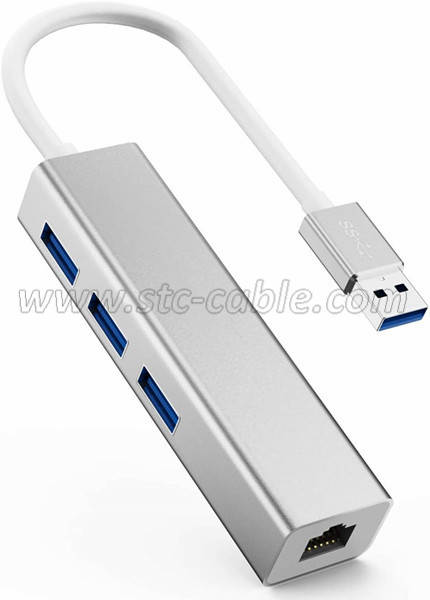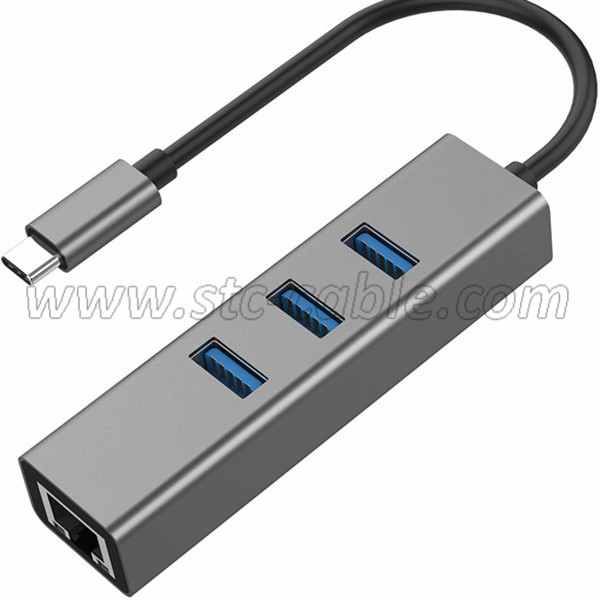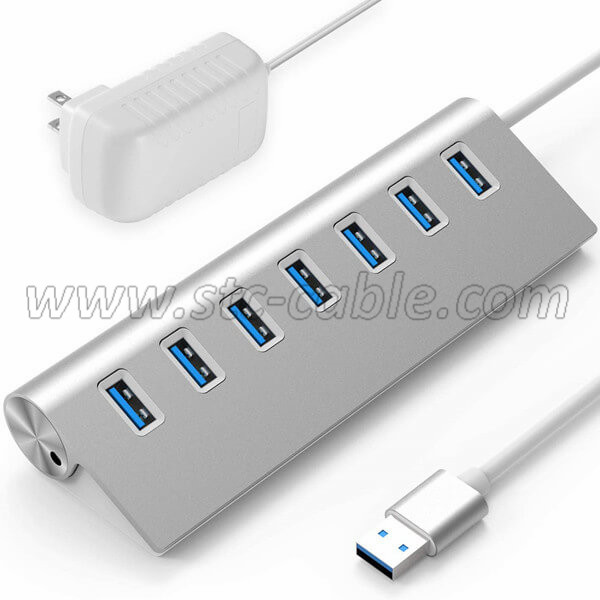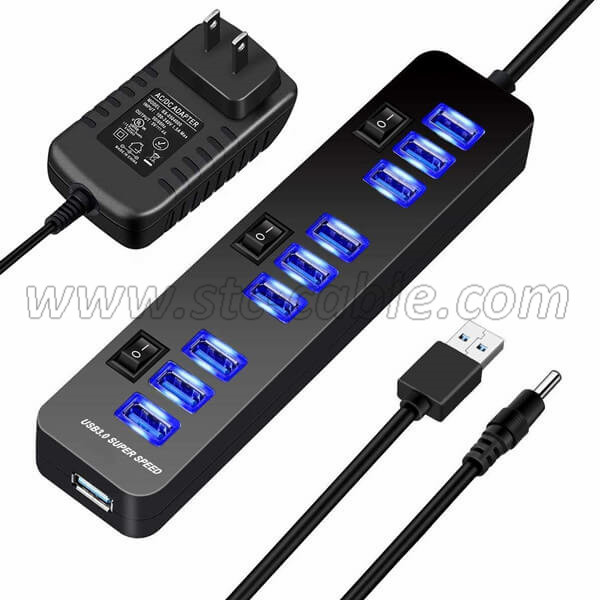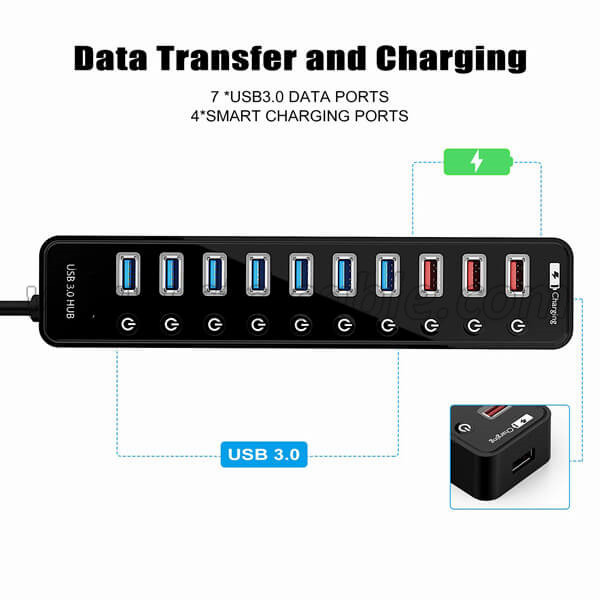Dose the multi-port USB-HUB affect the data transfer speed?
Theoretically speaking, it will definitely decrease, but the actual situation is not necessarily.
Each downstream interface of the USB Hub will equally divide the bandwidth of the upstream interface, and the USB Hub itself also needs to transmit control signals, so the bandwidth of each downstream device must be smaller than the total bandwidth of the upstream device.
The actual situation is that it is difficult for mainstream USB 3.0 devices to occupy the total bandwidth (5Gbps). For example, mainstream 3.0 U disks only have a transfer speed of 100MB~200MB/s, and the equivalent bandwidth is less than 2Gbps, so the actual situation is not. must.
The principle of USB Hub is more complicated. The most complicated part of the USB protocol specification is the chapter of Hub. The principle of USB Hub is very different from that of network device (Ethernet) Router.
There are four modes of control transfer, bulk transfer, interrupt transfer and synchronous transfer in the USB protocol, among which:
1> Control transmission is used to transmit the instructions of the control device level;
2> Bulk transmission (the Chinese name may be called batch transmission) is mainly used to transmit various large pieces of data in USB, such as data read and written by U disk;
3> Interrupt transmission, used to transmit small pieces of data, the mouse and keyboard mainly use interrupt transmission;
4> Synchronous transmission is used to transmit data with insufficient real-time performance, which means that reliability is not guaranteed. Some USB audio devices use this transmission.
The USB Hub is responsible for integrating various transmission signals of downstream devices. The synchronous transmission has a certain limit. If it exceeds a certain proportion of the total bandwidth (20% in memory), the excess synchronous transmission will be discarded; interrupt transmission and control transmission It occupies reserved bandwidth and is not allowed to be discarded; Bulk transmission occupies the remaining bandwidth. If there is no synchronous transmission, then Bulk transmission can account for more than 90% of the total bandwidth.
After the USB Hub integrates data, it is sent to the upstream device. If there is a USB Hub upstream, the upstream device will continue to do the same operation. In addition, it should be noted that generally speaking, the USB interface on the host is itself a Root Hub. If there are multiple interfaces on a PC, it may be that multiple interfaces share a controller, and each controller has a Root Hub.
So USB Hub is equivalent to re-encapsulating various data packets, similar to routers in network devices, not as simple as switches or hubs.
At the same time, the USB Hub itself is also a USB device, which is responsible for reporting to the superior how many devices there are in its subordinates, and it also occupies some bandwidth to periodically report its status.
Send your message to us:
Post time: May-06-2022
